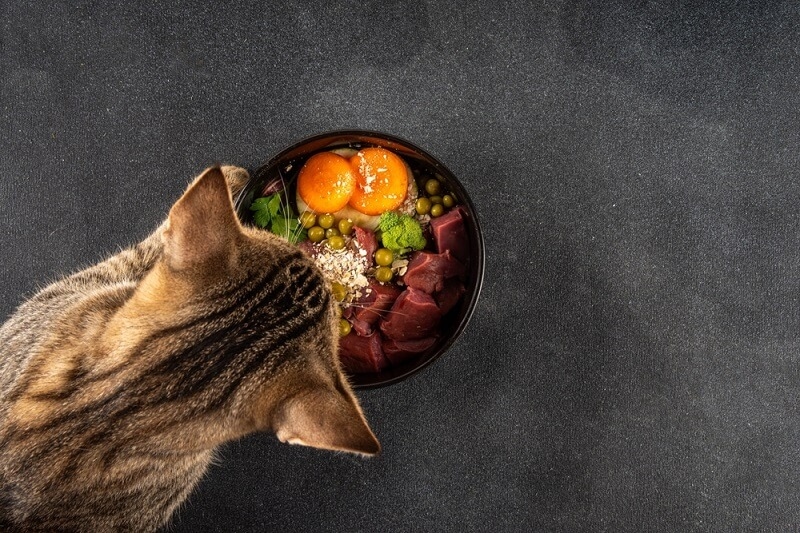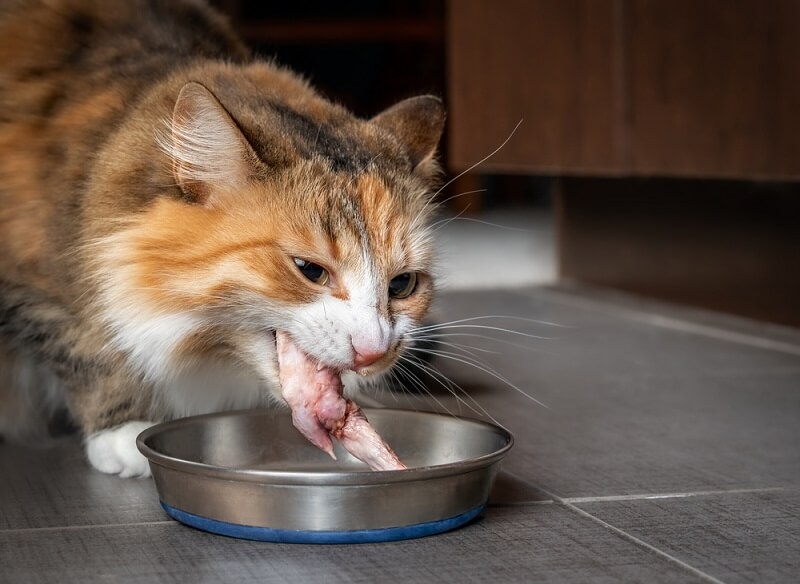
Switching your feline pal to a raw weight loss program requires careful attention. Understanding the pros and cons of the cat raw diet allows owners to make informed decisions about nutrition and safety. This manual covers critical elements like raw feeding cats' safety, techniques for uncooked weight loss plan transition cats, the benefits of raw food regimen for cat health, and guidelines for cheap uncooked cat food alternatives. By reviewing the one factor, cat proprietors can decide whether or not a raw feeding approach aligns with their domestic dog’s health and lifestyle.
A raw diet, commonly called BARF (Biologically Appropriate Raw Food), consists of raw animal proteins, liver, other internal organs, and bones. Cats are obligate carnivores, necessitating them to eat meat to thrive. A raw diet might include:
Grasping the composition of a raw diet is essential before determining its benefits and drawbacks.
Implementing a raw food regimen offers several advantages:
Many owners attempting to find holistic vitamins find the benefits of a raw food plan for cats compelling. However, the benefits should be balanced against potential dangers for knowledgeable decision-making.
While uncooked diets offer blessings, there are inherent raw food plan cat health risks:
Before transitioning your cat to an uncooked feeding program, knowing about the risks to cat health associated with an uncooked weight-loss program is essential.
Ensuring that raw feeding cats is well-protected means protecting every pet and person in your household. Essential protective practices include:
If you follow these recommended practices for raw food feeding, you will enhance a cat's safety when raw feeding and minimize the risk of bacteria and nutritional harm for your cat.

When attempting to feed a cat a raw diet, it is recommended to take things slowly. Creating a raw food diet for a cat with a diet transition will reduce digestive upset in a cat and promote familiarity.
A careful raw food diet change method makes it easier for first-time or sensitive feline eaters to adapt to new food sources.
Many cat owners may be scared of the price. However, affordable raw cat food options offer acceptable nutrition.
In conclusion, it is easier to diversify a cat's raw food plan when food options are less expensive.
The following is a brief evaluation to clarify the cat's uncooked weight-reduction plan pros and cons:
This desk illustrates why careful planning is necessary before beginning an uncooked feeding plan.
Discovering a raw food diet for cats allows owners to make wise choices for their feline companions. Eating a raw food diet can positively affect a higher quality of digestion, coat and skin health, and weight maintenance, and it can provide some aspect of dental care. There are functional risks, bacterial infection, nutritional imbalance if not closely monitored, some degree of orthopedic injury, and more training time associated with feeding raw.
Understanding this one factor enables cat caregivers to weigh the benefits against the precautions safely. By studying the key benefits and disturbing conditions, you can offer a weight loss program that supports your cat’s health, happiness, and sturdiness.
Cats switching diets may experience brief diarrhea or vomiting. Gradual creation and tracking lessen strain on their digestive system.
In houses with youngsters or immunocompromised people, strict hygiene measures must be implemented to prevent infections.
Veterinarians emphasize that unbalanced, uncooked diets can cause calcium, phosphorus, taurine, and vitamin deficiencies. Supplementation is sometimes critical.
These expert tips will ensure a successful raw feeding program while minimizing health concerns associated with raw cat diets.
Myth: Raw diets will prevent diseases from occurring.
Myth: Cats will always prefer raw foods.
Myth: Raw feeding will be more expensive than higher-end kibble.
Dispelling myths helps pet owners make informed decisions regarding cat raw diets and their strengths and limitations.
Every responsible pet owner must figure out a cat's uncooked diet. A raw diet can enhance digestion, contribute to a healthy coat, manage weight, and promote oral health. However, there are risks, including bacterial contamination, unbalanced nutrition, and broken bones.
By carefully weighing these benefits and challenges, you may make informed decisions about prioritizing your cat’s fitness and well-being. Proper planning, studies, and sessions with a veterinarian ensure your cat thrives on the appropriate food plan.
This content was created by AI